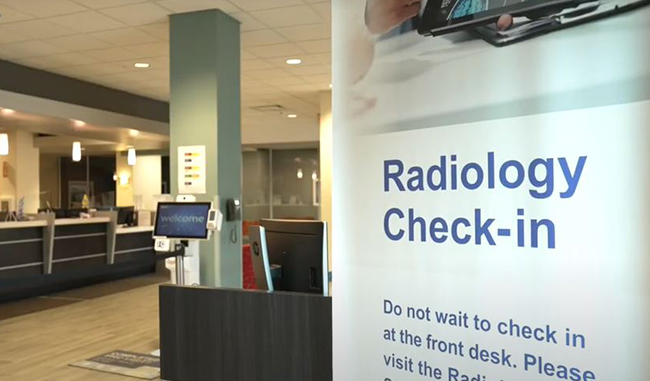
Hip Replacement Surgery: Your Week-By-Week Guide to Recovery
Medical advances in hip replacement surgery, pain management and physical therapy have made recovery surprisingly fast. A person will likely be on their feet within 24 hours and walking with less assistance — often without a cane, crutches or walker — within a few weeks.
Getting a hip replacement can be a liberating experience. Many people find that it significantly lowers their hip pain, improves their quality of life and allows them to return to more everyday activities.
There are several types of hip replacement surgery. These include:
- Total hip replacement (THR)
- Hip revisions (repair to an artificial hip joint)
- Anterior total hip replacement (minimally invasive)
Thanks to medical advancements, recovery times are significantly shorter than they once were. Some people can even go home the same day as their surgery.
Here’s what to expect with recovery after total hip replacement surgery.
Week‑by‑Week Hip Replacement Recovery Timeline
Here’s what to expect recovery-wise from a total hip replacement:
- First 24 hours after surgery: The person starts physical therapy and learns how to sit up and get out of bed safely.
- Day of surgery to the first 2 days: Many patients practice tasks like climbing stairs and walking longer distances as early as the day of surgery, depending on individual progress and your care team’s plan.
- First 2 weeks after surgery: The person will try recovery and rehabilitation exercises at home. They might use a walker temporarily during this time. The stitches or staples will be removed about 2 weeks after surgery. Many surgeons now use dissolvable stitches or skin glue, but if staples or non‑dissolvable stitches were used, they’re typically removed about 2 weeks after surgery.
- 2 to 6 weeks after surgery: The person gets regular physical therapy and probably won’t need a walker anymore. Your surgeon may recommend specific precautions when sitting, sleeping, bending or resuming intimacy, depending on the surgical approach.
- 6 weeks to 3 months after surgery: Most patients notice significant improvement by around 2 months.
- 3 to 12 months after surgery: As they stay active, they’ll build up endurance and get stronger, more mobile and less stiff.
The time it takes someone to recover will depend on their overall fitness and health before surgery, as well as how well they follow postsurgery recovery instructions.
How to prepare for hip replacement recovery
There’s a lot a person can do before surgery to speed up their postsurgery recovery.
- Strengthen the muscles around the hip. A physical therapist can help make an exercise plan for people preparing to have hip replacement surgery.
- Quit smoking (if applicable) and manage chronic conditions. Chronic conditions that may require management before surgery include rheumatoid arthritis and sleep apnea.
- Prepare the home for accessibility. Here are a few ways to prepare:
- Arrange for someone to help with household tasks, like cooking and laundry
- Cook meals in advance for easy reheating
- Install a raised toilet seat, grab bars in the shower and a stool to use in the bathtub or shower
- Have a cane or walker
- Place everyday things within arm’s reach
- Get a temporary disabled parking permit
Frequently asked questions about hip replacement recovery
Here are answers to some common questions about recovery and rehabilitation after hip replacement surgery.
How long after a hip replacement can a person drive?
A person can likely start driving again once they’re no longer taking opioids and they feel strong and comfortable enough to drive. For those who had right hip surgery, it may take longer to get back in the driver’s seat, since the right leg is typically used to operate the pedals when driving.
To be able to drive safely after hip surgery, the person must be:
- Able to move their foot quickly from the gas to the brake
- No longer taking opioid medications
How long does it take to walk normally after hip surgery?
Many people start walking within 24 hours after undergoing total hip replacement surgery. And most regain nearly all their mobility by around 2 months postsurgery.
A person’s individual recovery time will depend on their personal health status and situation. For example, some people may require rehabilitation to help them regain strength and mobility in the affected area if they had a limp before surgery.
What’s the best exercise after hip replacement surgery?
Walking is the best way to recover quickly after hip replacement surgery. After about 3 months, or whenever the person feels ready, they can try other activities, like hiking, biking and swimming.
Within the first 2 months after surgery, physical therapy can help the person regain mobility. The physical therapist will focus on improving a person’s gait quality and balance. They’ll also help the person improve the strength and flexibility of their hip joint.
Takeaway
Most patients experience major recovery within about 2 months of total hip replacement surgery. A person can improve their recovery by staying active before surgery and resuming activity soon after.
Working with a physical therapist can help people build strength and flexibility in the muscles and tissues surrounding the new hip.
Crystal Run Healthcare offers a dynamic team of orthopedic surgeons, sports medicine specialists, and podiatrists who have trained and honed their expertise at the greatest academic medical centers in America. They are able to reset, repair, replace and revitalize simple or complex bone, joint or muscle conditions. Schedule an appointment with a Crystal Run Healthcare orthopedic specialist today.
- Activities after total hip replacement. (2022). https://orthoinfo.aaos.org/en/recovery/activities-after-hip-replacement/
- Hip replacement surgery. (2023). https://www.niams.nih.gov/health-topics/hip-replacement-surgery
- Total hip replacement. (2024). https://orthoinfo.aaos.org/en/treatment/total-hip-replacement/

 Optum Radiology at Crystal Run Healthcare
Optum Radiology at Crystal Run Healthcare Request medical records online
Request medical records online